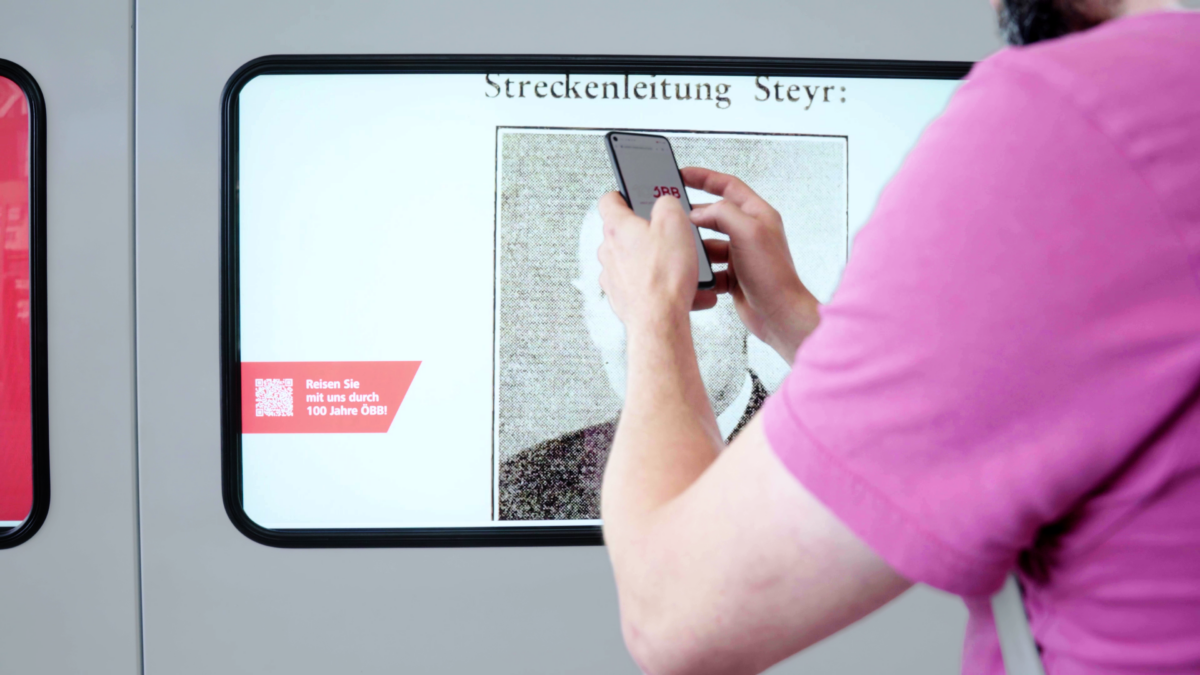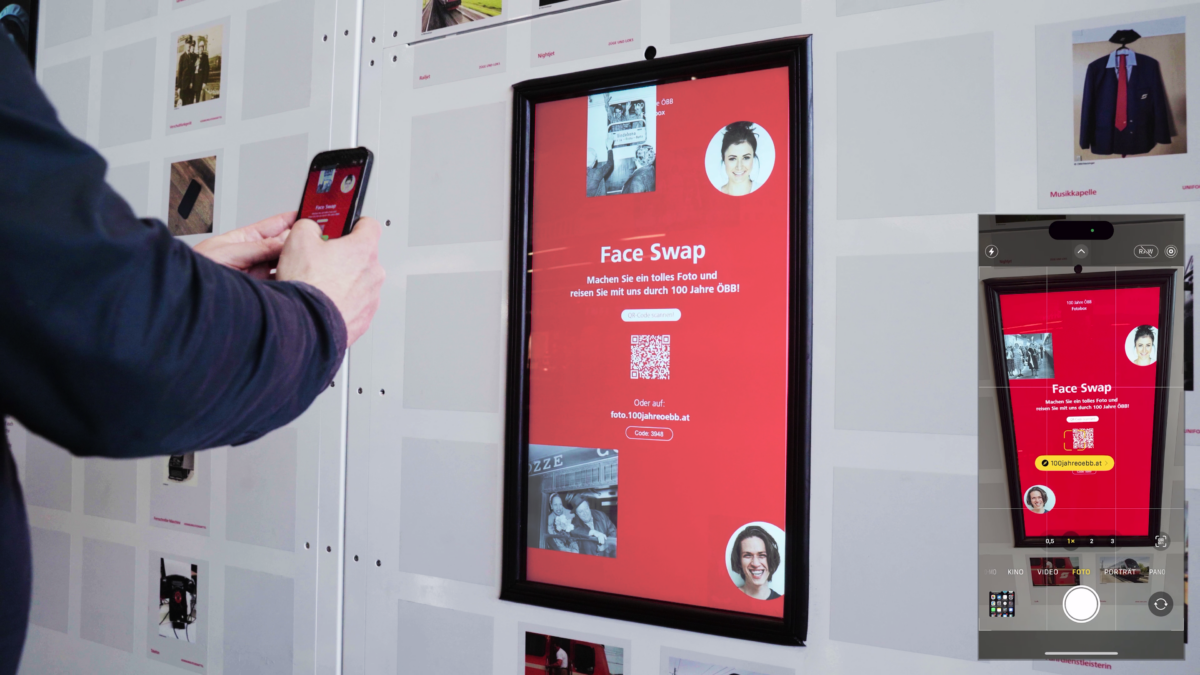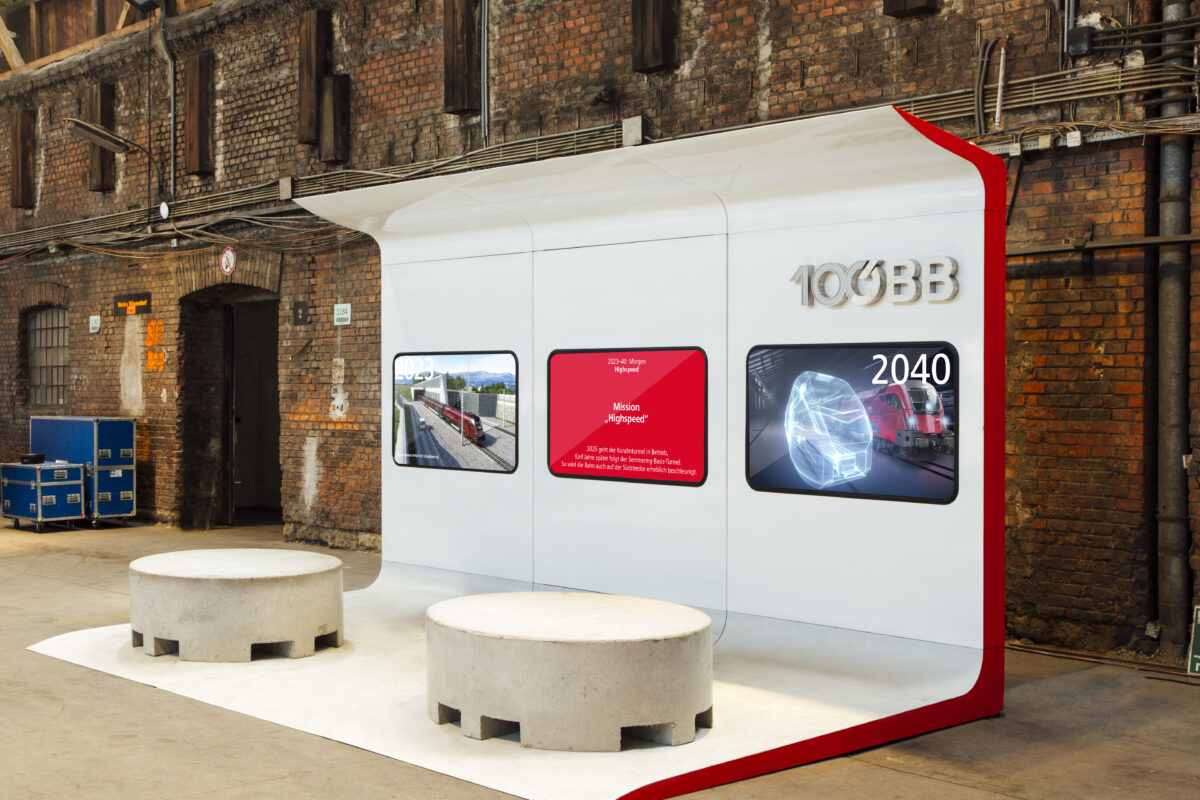Timewindow – 100 years of austrian railways

CLIENT
ÖBB
IN COOPERATION WITH
WHY.Studio
CONSTRUCTION AND ASSEMBLY
Koop
FOTOCREDITS
Wolfgang Lehrner
Amid the celebrations of the 100th anniversary of the Austrian Federal Railways (ÖBB), an exhibition project was created that takes visitors on a journey through time. The “Time Window” is an interactive exhibit that blurs the lines between yesterday and today, presenting the rich history of the company in an exciting and engaging way.
The Time Window
The ÖBB (Austrian Federal Railways) are an integral part of Austria’s identity and have made an enormous contribution to the country’s development over the past 100 years. To celebrate the history of the ÖBB in a fitting manner, Studio WHY designed a mobile exhibition unit that connects the past and the present. BILDWERK was responsible for programming the interactive multimedia applications and media technology.
The front of the exhibition piece is dominated by three large-format, daylight-compatible displays, whose frames are reminiscent of the windows of a Railjet train car. Through these “windows into the past,” visitors can experience the evolutionary journey of the ÖBB through images, videos, and stories. Using their own smartphones, visitors can easily connect to the Time Window via a QR code to select and control content.
Visitors also have the opportunity to make their own travel experiences part of the exhibition by sharing self-created video clips via the internet and presenting them in the Time Window. This transforms the screen surfaces into a lively, interactive train window, creating a thematic bridge that connects the present-day experiences of travelers with the historical moments of the ÖBB.
Diving into the Past
Another highlight of the interactive experience is revealed on the back of the exhibition piece. Here, guests can step into the roles of those who once traveled on the historic tracks of the ÖBB. Using a fascinating face-swap feature, visitors can insert themselves into historical ÖBB photographs. This connection between past and present allows visitors to become part of history, even if just for a moment.


